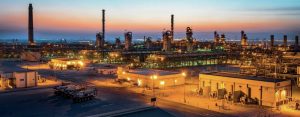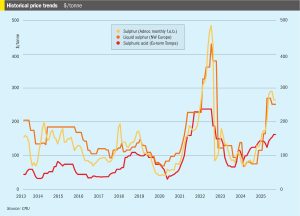
Marimaca to acquire acid plant
Marimaca Copper Corp. says that it has recently executed a binding asset purchase option agreement to acquire a used sulphuric acid plant in Chile from CEMIN Holding Minero. Sulphuric acid is one of the key input costs for the Marimaca Oxide Deposit, and the ability to produce a significant amount of its own supply will reduce exposure to a volatile acid market. The agreement has an exclusivity period of three months to allow further detailed technical and engineering reviews including capital and operating cost estimates for the installation and operation of the 150,000 t/a sulphuric acid plant, whose output would represent approximately 30-40% of total acid consumption at the Marimaca Oxide Deposit, depending on the phase of development. Marimaca says that, based on market research and quotations received, the estimated equipment cost of a new sulphuric acid plant of similar capacity is approximately $35-40 million, with a total installation cost of $50-60 million. The cost of breaking down and relocating the plant to the site at Mejillones and the start-up costs of the used plant are expected to be materially lower than cost of new equipment. Indicative operating costs show the potential for an approximately 30% reduction in acid cost relative to current long-term forecast and normal historical spot and contract acid prices delivered to Mejillones.





